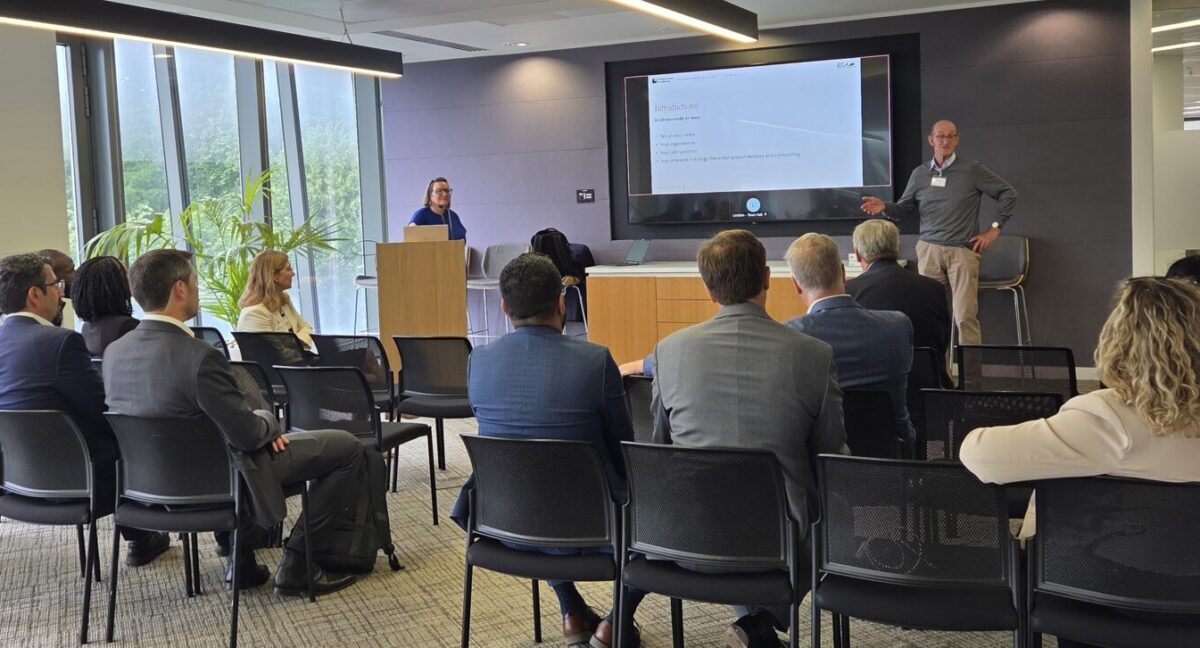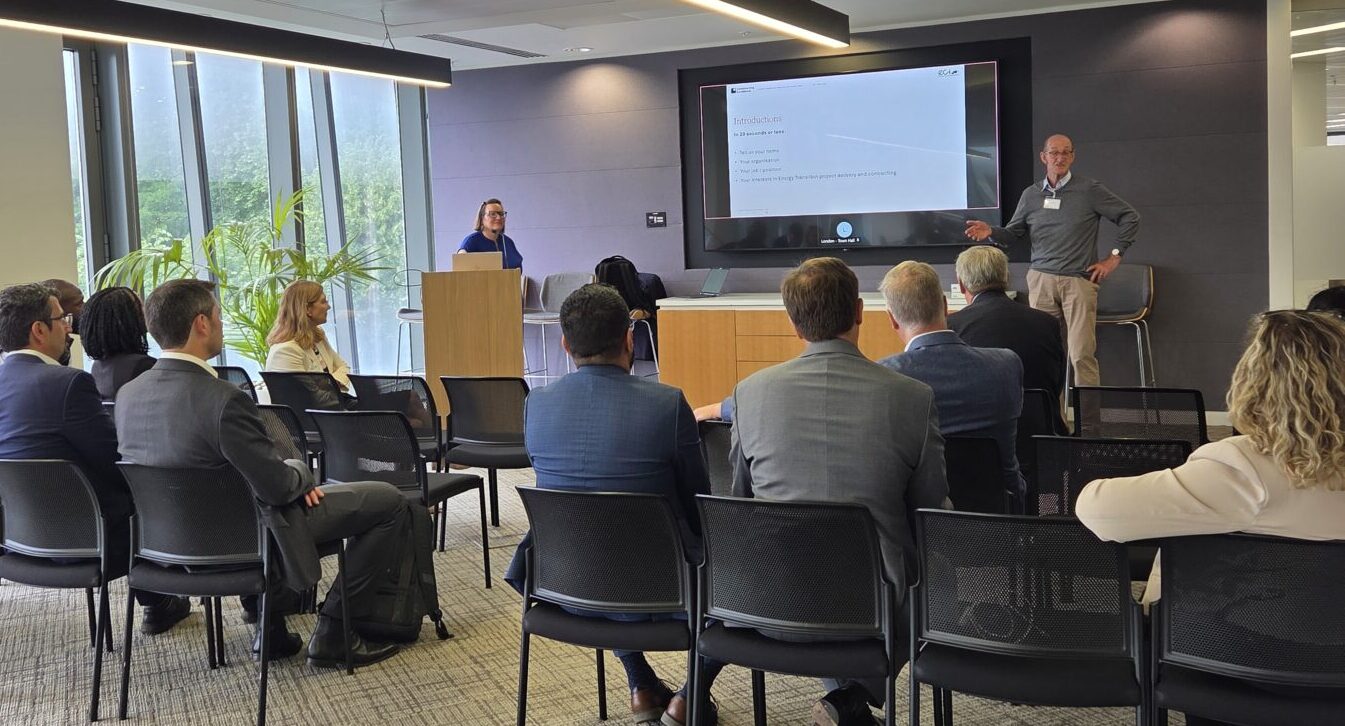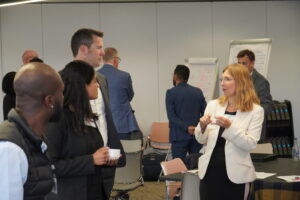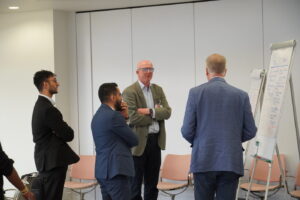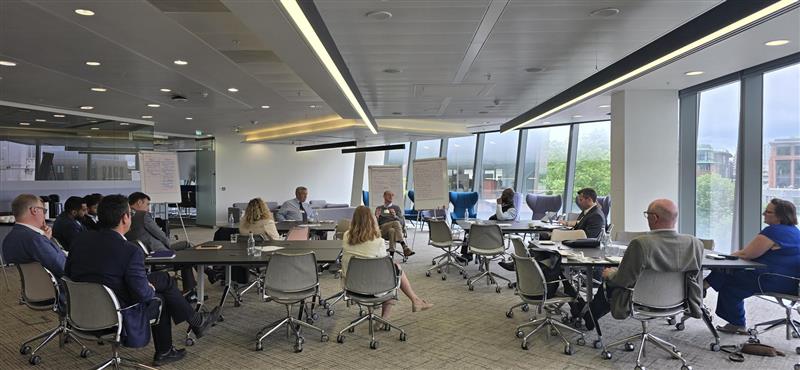Output From The Face-To-Face Workshop Held On 10 June 2025
Message To Industry
The delegates’ agreed that the contracting and delivery model that is most likely to result in successful project outcomes for the contracting parties on Energy Transition projects, especially in the UK, is that based on effective collaboration.
The delegates did however agree that, by using the Lump Sum Turn Key EPC (LSTK EPC) contracting and delivery model, the contracting parties could achieve successful project outcomes, provided that the principles implicit in that model are strictly adhered to by both contracting parties. The project circumstances also need to be congruent with that model in order to result in success. There was consensus that in the UK, for Energy Transition projects, there is no such congruency and that very often the principles are not adhered to.
In the context of the necessary requirements for achieving successful project outcomes for the contracting parties using collaborative contracting and delivery models, the delegates provided the following recommendations to the industry;
The Benefits Of Collaborative Contracting and Working
- Articulate our ambition for a better industry.
- Articulate the benefits of collaboration better (take people with us).
- Recognise that collaboration can make more effective use of total industry resources.
- Remove the “fees on fees” – leads to less costly outcomes (supply chain mark-ups).
- More opportunity found in a collaborative environment leads to more savings.
- Higher probability for FID (almost nil today).
- Lack of industry acceptance of LSTK – no more competition.
Behaviours
- Cultural change programme for clients and suppliers.
- Industry/media to advocate client/stakeholder mindset change.
- Contractors or clients who have successfully administered alliancing projects to share their success stories.
- Be willing to develop trust with contractors and supply chain.
- Allow enough time during FEL to develop relationships with other organisations to enable collaboration.
- Focus on outcomes, not processes.
- Use the ECITB PCT to guide collaboration and use the free online training (Foundations in Effective Project Collaboration).
Preparation
- Be bold
- Be clear on programme/project/enterprise targets and objectives (safety, quality, time, cost, ESG outcomes).
- Don’t rush the front end – invest in project set-up and project management fundamentals
- Use the USP of lessons learned from successful projects and struggling projects to advocate the use of alliancing models.
Risks And Risk Management
- Understanding the risks
- Embrace holistic risk management.
- Be honest about the risk landscape.
- Recognise the limitation of industry capacity.
- Focus on opportunities and risks equally (risk & opportunity registers and active management).
Incentives
- Adopt incentivisation
- Get calibration of incentives right – must be enough to be worthwhile (it’s OK to pay if self-funded).
- Flow down of incentives to key project participants and people.
- Focus on self-funded gain sharing (not pain).
- No blame leads to more motivation and innovation.
- Clients need the capability to identify “should” cost.
About the Workshop
Delegates
The workshop delegates comprised experienced project professionals with diverse backgrounds and experience from a broad spectrum of engineering construction-oriented organisations involved and / or interested in the delivery and contracting of Energy Transition projects generally, and specifically in the United Kingdom.
Energy Transition Projects – Scope
Not all Energy Transition Projects have the same or similar characteristics. There was consensus among the delegates that Energy Transition projects may be considered under three main types;
- Relatively low risk and / or tried and tested technology but having complex and logistics-dependent delivery and installation characteristics (e.g. on / offshore wind farms, solar panel installations).
- Nuclear, which has its own well-known specific engineering, procurement, installation and start-up challenges.
- Gases and/ or fluids-oriented plants that very often necessitate three conventional industries (infrastructure, power / energy and process) each having their respective ways of contracting and delivery methodologies needing to coalesce in the plant design and delivery under a single contracting arrangement.
The technology applied to gases and /or fluids-oriented plants is often well-known but on Energy Transition projects the technology is applied quite differently to how it has been used on conventional plants, meaning that the technology and the plant become ‘first of a kind’.
Way Of Working
The workshop was conducted on the basis of the Chatham House Rule.
The delegates worked in small groups (mostly 3 to 4 people per group) to address specific issues.
The morning Session was devoted to determining the most appropriate contracting and delivery model that would be most likely to result in successful project outcomes for the contracting parties. This involved four groups each considering firstly the pros and cons of LSTK EPC and Collaboration Models from the employer/ owner and contractor/ supply chain perspectives and then identifying for each contracting/ delivery model those pros and cons that the employer/ owner and contractor/ supply chain agreed upon. The output from each of the groups was shared with the other delegates in plenary discussions. The findings are summarised below;
LSTK EPC Contracting and Delivery Model
- Employer/ Owner Perspective
- Contractor/ Supply Chain Perspective
Pros
- Meets funder requirements
- (Perception of) cost certainty
- Predictability of delivery – defines rules of engagement (sets tone i.e. collaborative/adversarial)
- Potential for smaller client team
Cons
- Can get stuck with a toxic contract – doesn’t deliver the pros but stuck in the situation. Could limit potential for onward sales.
- Challenge to get contractors/suppliers to price- limited market capacity
- Lack of visibility where the risk lies
- Increased capex
- Less cooperative behaviours – bigger impact of any changes. Changes in requirements difficult to management.
Pros
- Flexibility choosing client
- Limited interference, greater control
- If risks are managed properly, opportunity for profitability
- Certainty of outcome
- Continuity of work- based on good relationship with client and reputation
- Clear & unambiguous specification of requirements
Cons
- Full liability of delivery including…
-
- Understanding of risks
- Supply chain issues
- Tech risk
- HSE issues
- Climate risk
-
Alliancing/ Collaboration Model
- Employer/ Owner Perspective
- Contractor/ Supply Chain Perspective
Pros
- Decisions made in interest of overall project programme
- Better coordinated outcome, more buildable design, better outcome – visibility of design before it gets to construction
- More holistic programme shared with key stakeholders
- Risk can be better proportioned – better risk allocation means less risk for each party involved
Cons
- Client suffers from contractors with a silo mentality- behaviours of individuals may not be collaborative
- Client takes on more risk in alliancing format
- On big alliancing projects, tend to get cost inflation- big contract divided into smaller packages is easier to manage cost increases.
- Becomes more effort for the owner to manage.
Pros
- Collaborative approach leads to price certainty- transparency. May get open book strategy.
- Trust/ openness- collaboration is about people, behaviours and relationships. Requires effort but leads to better outcomes through better relationships.
- Shared incentives- collaboration offers opportunity for different approach to ‘who bears risk’, management of risk becomes easier, less risk transfer.
- Therefore, improve risk management
- EPC’s perspective working with contractors in collaborative arrangement, productivity becomes easier to manage.
- Collaboration offers opportunity for price reduction i.e. man hours, less people needed to complete
- Reducing schedule- less overruns
- Less conflict
Cons
- Demonstrating competitiveness = issue for client. Its a challenge, knowing you have the right partner.
- Lenders & other influencers – some clients have co-investors/ finance providers who influence how clients will deliver projects. May be difficult for clients to fully adopt collaborative working.
- Need to change from a traditional mindset
- Depends on nature of the project- LSTK could be alright, provided we stick to the rules.
- Which is likely to work in which environment?
- It’s not right to say the only way is collaborative contracting but its right to say you’ve got to get the right model for the conditions of the contract and challenges of the project.
- No one scheme fits all nothing wrong with LSTK providing the rules work. If you don’t have certainty over technology, etc. how can you take risk.
- It’s all about people – people can make things work if they want to/willing to. LSTK can work if all parties understand what’s expected of them to make it work.
- Where’s the money coming from and what are the constraints of that source of finance- fundamental factor in making these decisions.
- Collaborative arrangement requires time and effort in the early stages to get the relationships right. In an environment where risks are perceived to be high, collaboration could be an answer.
- Need trust in collaborative agreement.
- There’s less precedent in how disputes are resolved on collaborative arrangements vs. LSTK – could end up begin more costly, particularly for next few years, until precedent is more established.
- Need to consider dispute avoidance for collaborative arrangement. All parties should be buying into combined set of objectives & thinking about what’s best for the project. Need the right delivery stakeholders bound together.
- Mindset change needs to take place across all parties- this will lead to less disputes.
- Need to consider main players for project success and bring them together to collaborate – need the core people/ right people involved.
- Demand for LSTK in engineering is becoming less and less.
- Market has driven lowest cost over recent years which leads to LSTK. But better management of risk provides better turn key outcomes.
- Supply chain doesn’t want to be left with risk.
- Need to consider what are the real risks… contractor will price in uncertainty and could become too expensive for client. Then there’s no project.
- Industry has a habit of skating over risk.
Given the combination of the market conditions together with the uncertainty and risk in many Energy Transition projects the consensus among the delegates was that the adoption of collaborative / alliancing contracting and delivery models would be more likely to result in the contracting parties being more able to achieve successful project outcomes.
Based on these findings, in the afternoon session delegates considered three issues that would be critical to achieving successful project outcomes in adopting collaborative contracting and delivery models. The group’s outputs are addressed below;
The group’s outputs are addressed below
- Mindset Change
- Incentivisation
- Approach to Risk
Mindset change– how do we support a change in mindset so that all delivery stakeholders are invested in success?
- Leaders need to lead on the change of mindset, it is well embedded.
- We need to be able to learn from projects where collaborative strategy has been implemented.
- Also need to take away lessons from less successful projects and how those aspects of failure could have been mitigated if a different approach was taken.
- Need to find a way to state forums for adverse influences
- People think they’re following traditional routes to protect their organisations but that is acting in self-interest.
- Need to get a client on board to have a go at a collaborative project. Someone needs to make the move, the evidence can then be used to learn from.
- Risks of using collaboration are no worse than the alternative.
- Communication is of high importance, need to communicate message that there’s another way of doing things
- There are case studies out there, but people sometimes need a case study that exactly mirrors their project and needs.
- Important for leaders of industry to demonstrate their goals and ways of working. A leader’s board table reflects their way of working, collaborative teams should be assembled.
- Need to try by doing and build confidence that alternatives do work. Get those who have had experience of working on collaborative projects to advocate.
- People enjoy working on productive projects, people want to be treated well and achieve outcomes. Collaborative contracts support this. People don’t thrive in adversarial environments and affects retention (of people).
- Impacts skills shortage – there’s not capacity or capability, need to retain and attract talent.
- People have been collaborating about safety for a long time, we want to keep ourselves and each other safe. The same principles should be applied elsewhere. Companies don’t compete on safety, same could be said for productivity.
How do we incentivise improvements on both investment cost and delivery time?
- What works & doesn’t work:
- Pain vs gain in incentive model- risk of using pain is that you end up back in fixed price model with bad behaviours.
- Gain- benefits, gain sharing self-funding model. Encourages people to solve problems, deliver outcomes together but only works if everyone has a piece of that enterprise.
- Important to have good metrics that are objective not subjective- subjective can be used during the project to assess against outcomes.
- Companies don’t deliver projects, enterprises etc, people deliver them- do you like incentives for individuals?
- If project outcomes are achieved there should be project bonuses to encourage to create alliance. This is essentially profit sharing. If 10% is achieved, should get 10% back but the project needs to be achieved successfully- 10% of nothing is nothing.
- Achieving cost and & time should be rewarded on a pre-determined basis.
- Incentive needs to be enough otherwise there is no incentive- needs to be calibrated.
- Blame culture diminishes motivation completely, ends productivity.
- Pain splits focus- 1 side is we need to achieve the outcomes; 2nd side focuses on avoiding the pain.
- If contractor has real incentive to earn, this can affect original commitment price because if the incentive is big enough, they’ll go for it.
- Value is the gain- it’s the value it brings, not cost.
- To incentivize you need a balance between risk & reward. If people are under threat they won’t achieve.
- If on a reimbursement basis, keeping costs down benefits the team in the long run. Incentivises achieving this goal.
How do we change the approach to risk? Treat risk as a project / business matter to be navigated effectively and opportunities pursued for the benefit of the project and its delivery stakeholders?
- Big overlap with incentivisation.
- Whether we think about it as an incentivisation pot or risk/ reward pot its essentially same.
- Need to understand risk for all of the parties and that of the project enterprise.
- If you use traditional approach such as LSTK, the client sets out at front end what are the risks and who is responsible for them.
- Whereas, if you set out the risk for all parties with all parties at the table you have a better understanding of the risk and who is best placed to take control of it.
- Who pays? Yes, you can identify who is best placed to manage risk but if that risk is realised who pays the bill- this needs to be factored in.
- Some things are in control of team i.e. quality of output, the person in charge should be responsible for cost.
- Whereas other things sit under the wider project- so who pays?
- If there’s a risk pot, can we increase the scale/scope of that by implementing innovation, working more efficiently, etc. Anything left at the end of the project could then be shared which becomes an incentivisation- who then is in charge of this pot?
- Pain vs gain, if there’s no money in the pot at the end, who has to pay- becomes a punishment that someone needs to pay more. Incentivisation would be that the leftovers become profit to be shared.
- Regardless of contracting mechanism, honesty around risk funnel as you go through the project and what that landscape looks like at different stages e.g. design stage, build stage.

